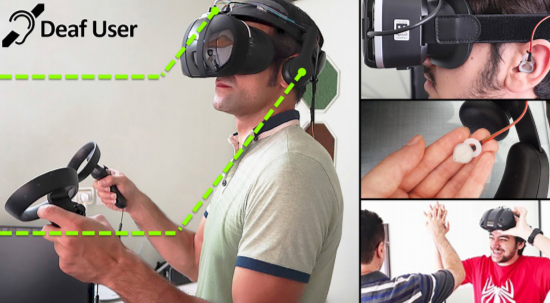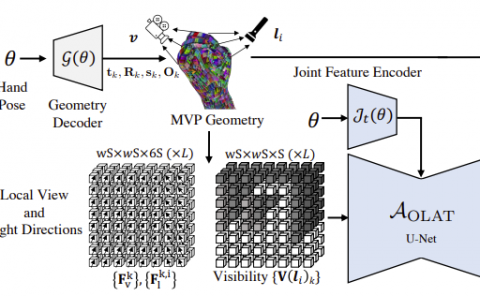EarVR: Using ear haptics in virtual reality for deaf and Hard-of-Hearing people
PubDate: Feb 2020
Teams: Vienna University of Technology
Writers: Mohammadreza Mirzaei ; Peter Kán ; Hannes Kaufmann
PDF: EarVR: Using ear haptics in virtual reality for deaf and Hard-of-Hearing people

Abstract
Virtual Reality (VR) has a great potential to improve skills of Deaf and Hard-of-Hearing (DHH) people. Most VR applications and devices are designed for persons without hearing problems. Therefore, DHH persons have many limitations when using VR. Adding special features in a VR environment, such as subtitles, or haptic devices will help them. Previously, it was necessary to design a special VR environment for DHH persons. We introduce and evaluate a new prototype called “EarVR” that can be mounted on any desktop or mobile VR Head-Mounted Display (HMD). EarVR analyzes 3D sounds in a VR environment and locates the direction of the sound source that is closest to a user. It notifies the user about the sound direction using two vibro-motors placed on the user’s ears. EarVR helps DHH persons to complete sound-based VR tasks in any VR application with 3D audio and a mute option for background music. Therefore, DHH persons can use all VR applications with 3D audio, not only those applications designed for them. Our user study shows that DHH participants were able to complete a simple VR task significantly faster with EarVR than without. The completion time of DHH participants was very close to participants without hearing problems. Also, it shows that DHH participants were able to finish a complex VR task with EarVR, while without it, they could not finish the task even once. Finally, our qualitative and quantitative evaluation among DHH participants indicates that they preferred to use EarVR and it encouraged them to use VR technology more.



